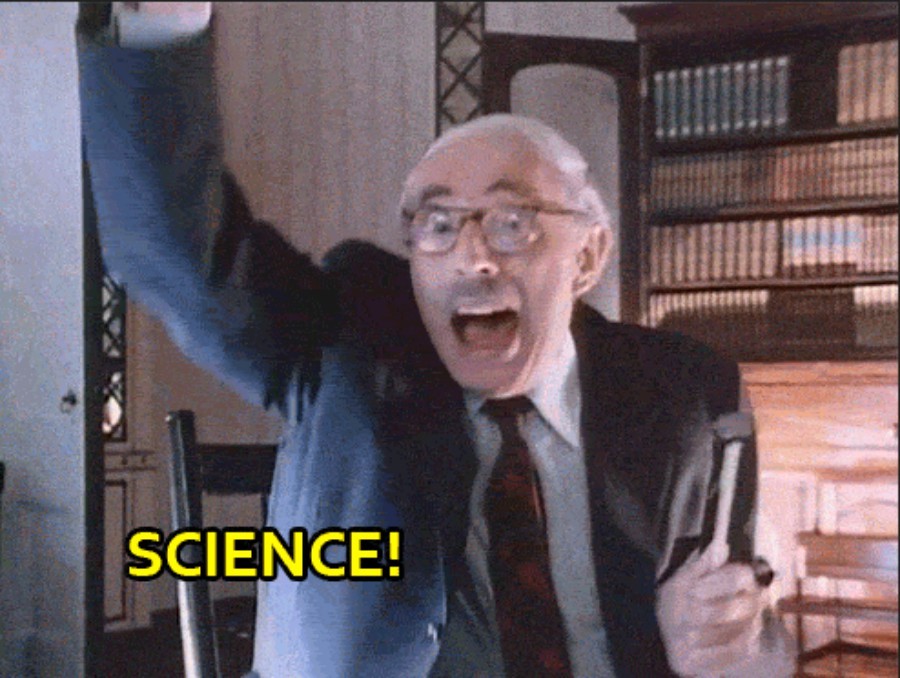 Here is sampling of some of the latest nonfiction books in the library that cover a variety of sciencey topics, including Ecology, Biology, Space Science, Earth Science, Chemistry and more; look for them in the New Books section!
Here is sampling of some of the latest nonfiction books in the library that cover a variety of sciencey topics, including Ecology, Biology, Space Science, Earth Science, Chemistry and more; look for them in the New Books section!
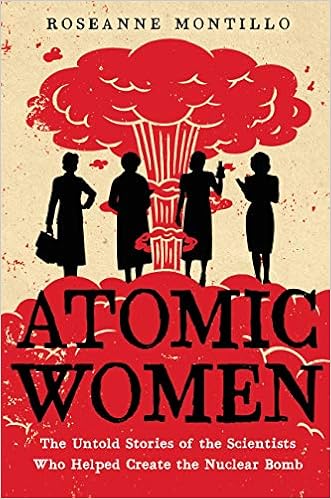 Atomic Women: The Untold Stories of the Scientists Who Helped Create the Nuclear Bomb by Roseanne Montillo — Explores the critical steps taken toward building a successful nuclear bomb and the female scientists who grappled with the destructive aftermath of their own creation, all while striving to be recognized for their work. “Readers familiar with 20th-century science history will be fascinated by the detailed account of the intertwined European scientific communities and the prejudices and difficulties routinely faced by women scientists” (Booklist).
Atomic Women: The Untold Stories of the Scientists Who Helped Create the Nuclear Bomb by Roseanne Montillo — Explores the critical steps taken toward building a successful nuclear bomb and the female scientists who grappled with the destructive aftermath of their own creation, all while striving to be recognized for their work. “Readers familiar with 20th-century science history will be fascinated by the detailed account of the intertwined European scientific communities and the prejudices and difficulties routinely faced by women scientists” (Booklist).
![Earth Day and the Environmental Movement: Standing Up for Earth by [Christy Peterson]](https://m.media-amazon.com/images/I/51M4TCXZ4wL.jpg) Earth Day and the Environmental Movement: Standing Up For Earth by Christy Peterson — An historical look at the launch of Earth Day and a look at the global environmental movement that has sprung from it. “This book, used across science classes or in social justice circles, has a place in public and school libraries — not just as a part of an Earth Day display but as a relevant resource about a dire issue facing the global population” (School Library Journal).
Earth Day and the Environmental Movement: Standing Up For Earth by Christy Peterson — An historical look at the launch of Earth Day and a look at the global environmental movement that has sprung from it. “This book, used across science classes or in social justice circles, has a place in public and school libraries — not just as a part of an Earth Day display but as a relevant resource about a dire issue facing the global population” (School Library Journal).
 Exploring The Elements: A Complete Guide To The Periodic Table by Isabel Thomas and Sara Gillingham — This artful and accessible guide to the periodic table names all 118 chemical elements and helps readers understand the remarkable ways we have learned to use them. Graphically stunning layouts feature each element’s letter symbol and atomic number, exploring its attributes, characteristics, uses, and interesting stories behind its discovery. “Readers can immerse themselves in the material for hours or simply dip in and out at random; the book lends itself beautifully to either approach. Truly an exceptional introduction to the periodic table and all its wonders” (Booklist).
Exploring The Elements: A Complete Guide To The Periodic Table by Isabel Thomas and Sara Gillingham — This artful and accessible guide to the periodic table names all 118 chemical elements and helps readers understand the remarkable ways we have learned to use them. Graphically stunning layouts feature each element’s letter symbol and atomic number, exploring its attributes, characteristics, uses, and interesting stories behind its discovery. “Readers can immerse themselves in the material for hours or simply dip in and out at random; the book lends itself beautifully to either approach. Truly an exceptional introduction to the periodic table and all its wonders” (Booklist).
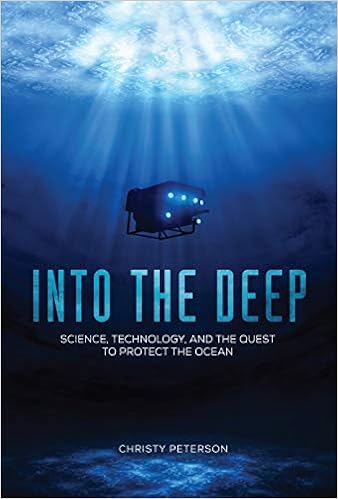 Into The Deep: Science, Technology, and the Quest To Protect The Ocean by Christy Peterson — Sheds light on issues facing oceanographers, including dead zones, coral bleaching, and climate change, and offers solutions to these challenges. “Along with a colorful layout and numerous photos and diagrams, the presentation is inviting for reluctant readers without sacrificing contextual depth. This title could serve as a rich source for topical research or inspiration to students interested in pursuing studies in science” (School Library Journal).
Into The Deep: Science, Technology, and the Quest To Protect The Ocean by Christy Peterson — Sheds light on issues facing oceanographers, including dead zones, coral bleaching, and climate change, and offers solutions to these challenges. “Along with a colorful layout and numerous photos and diagrams, the presentation is inviting for reluctant readers without sacrificing contextual depth. This title could serve as a rich source for topical research or inspiration to students interested in pursuing studies in science” (School Library Journal).
 The Mars Challenge: The Past, Present, and Future of Human Spaceflight by Alison Wilgus and Wyeth Yates — This graphic introduction to the science and logistics of a manned mission to Mars explains how scientists are working to overcome the complexities of interplanetary travel. “The traditional panel layouts help ease readers’ ways through the sometimes complex information. An approachable read for those interested in both Mars and spaceflight in general, not to mention a useful classroom resource” (Booklist).
The Mars Challenge: The Past, Present, and Future of Human Spaceflight by Alison Wilgus and Wyeth Yates — This graphic introduction to the science and logistics of a manned mission to Mars explains how scientists are working to overcome the complexities of interplanetary travel. “The traditional panel layouts help ease readers’ ways through the sometimes complex information. An approachable read for those interested in both Mars and spaceflight in general, not to mention a useful classroom resource” (Booklist).
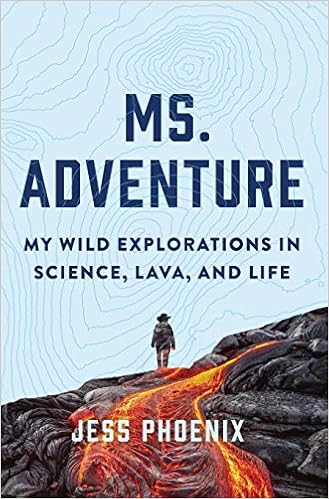 Ms. Adventure: My Wild Explorations in Science, Lava and Life by Jess Phoenix — Phoenix, the founder of the environmental scientific research organization Blueprint Earth, tells the story of her career in geology, the barriers she faced while advocating for more diversity in science and her incredible adventures. “Part coming-of-age story, part travelogue, part geology crash-course, Phoenix’s book doesn’t just bring the reader into her life but also into her work, making science feel approachable, important, and possible for readers from a wide range of backgrounds” (Booklist).
Ms. Adventure: My Wild Explorations in Science, Lava and Life by Jess Phoenix — Phoenix, the founder of the environmental scientific research organization Blueprint Earth, tells the story of her career in geology, the barriers she faced while advocating for more diversity in science and her incredible adventures. “Part coming-of-age story, part travelogue, part geology crash-course, Phoenix’s book doesn’t just bring the reader into her life but also into her work, making science feel approachable, important, and possible for readers from a wide range of backgrounds” (Booklist).
 One Earth: People of Color Protecting Our Planet by Anuradha Rao — Profiles Black, Indigenous and People of Color who live and work as environmental defenders. Through their individual stories, this book shows that the intersection of environment and ethnicity is an asset to achieving environmental goals. The twenty short biographies introduce readers to diverse activists from all around the world, who are of many ages and ethnicities. “Thought-provoking reading for young people figuring out their own contributions. This valuable compilation shows that Earth’s salvation lies in the diversity of its people” (Kirkus Reviews).
One Earth: People of Color Protecting Our Planet by Anuradha Rao — Profiles Black, Indigenous and People of Color who live and work as environmental defenders. Through their individual stories, this book shows that the intersection of environment and ethnicity is an asset to achieving environmental goals. The twenty short biographies introduce readers to diverse activists from all around the world, who are of many ages and ethnicities. “Thought-provoking reading for young people figuring out their own contributions. This valuable compilation shows that Earth’s salvation lies in the diversity of its people” (Kirkus Reviews).
 The Radium Girls: The Scary but True Story of the Poison that Made People Glow in the Dark (Young Readers’ Edition) by Kate Moore — Amid the excitement of the early twentieth century, hundreds of young women spend their days hard at work painting watch dials with glow-in-the-dark radium paint. The painters consider themselves lucky — until they start suffering from a mysterious illness. As the corporations try to cover up a shocking secret, these shining girls suddenly find themselves at the center of a deadly scandal. Adapted by the author from her New York Times bestseller, The Radium Girls: The Dark Story of America’s Shining Girls (also available at CA Library). “Moore’s personal, captivating prose renders this shining piece of history unforgettable” (Booklist).
The Radium Girls: The Scary but True Story of the Poison that Made People Glow in the Dark (Young Readers’ Edition) by Kate Moore — Amid the excitement of the early twentieth century, hundreds of young women spend their days hard at work painting watch dials with glow-in-the-dark radium paint. The painters consider themselves lucky — until they start suffering from a mysterious illness. As the corporations try to cover up a shocking secret, these shining girls suddenly find themselves at the center of a deadly scandal. Adapted by the author from her New York Times bestseller, The Radium Girls: The Dark Story of America’s Shining Girls (also available at CA Library). “Moore’s personal, captivating prose renders this shining piece of history unforgettable” (Booklist).
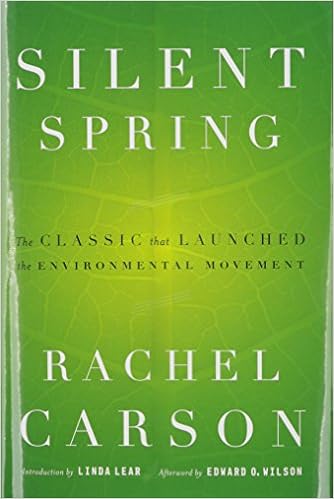 Silent Spring: The Classic That Launched the Environmental Movement (40th Anniversary Edition) by Rachel Carson — Rachel Carson’s 1962 environmental classic Silent Spring, which identified the dangers of indiscriminate pesticide use. Includes an introduction by biographer Linda Lear and an afterword by scientist Edward O. Wilson. “Though she did not set out to do so, Carson influenced the environmental movement as no one had since the 19th century’s most celebrated hermit, Henry David Thoreau, wrote about Walden Pond” (New York Times).
Silent Spring: The Classic That Launched the Environmental Movement (40th Anniversary Edition) by Rachel Carson — Rachel Carson’s 1962 environmental classic Silent Spring, which identified the dangers of indiscriminate pesticide use. Includes an introduction by biographer Linda Lear and an afterword by scientist Edward O. Wilson. “Though she did not set out to do so, Carson influenced the environmental movement as no one had since the 19th century’s most celebrated hermit, Henry David Thoreau, wrote about Walden Pond” (New York Times).
 Where Have All The Bees Gone? by Rebecca E. Hirsch — Numbers of bees are falling, and that has scientists alarmed. What’s causing the decline? Diseases, pesticides, climate change, and loss of habitat are all threatening bee populations. Learn about the many bee species on Earth — their nests, their colonies, their life cycles, and their vital connection to flowering plants. Most importantly, find out how you can help these important pollinators. “Accessible and concise, this volume teaches an important topic responsibly without being dry” (Kirkus Reviews).
Where Have All The Bees Gone? by Rebecca E. Hirsch — Numbers of bees are falling, and that has scientists alarmed. What’s causing the decline? Diseases, pesticides, climate change, and loss of habitat are all threatening bee populations. Learn about the many bee species on Earth — their nests, their colonies, their life cycles, and their vital connection to flowering plants. Most importantly, find out how you can help these important pollinators. “Accessible and concise, this volume teaches an important topic responsibly without being dry” (Kirkus Reviews).
